While the saying “buy once, cry once” is small comfort when you max your card on a new scope, it isn’t always practical.
Thankfully, there are some good quality items out there that won’t totally destroy your savings — but finding those diamonds in the rough isn’t an easy task.
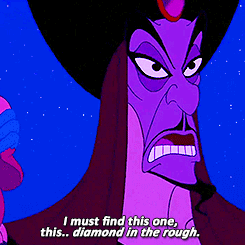
But that’s why we’re here for you!
We’ve rounded up a whole bunch of sub-$150 binoculars and tested them out.
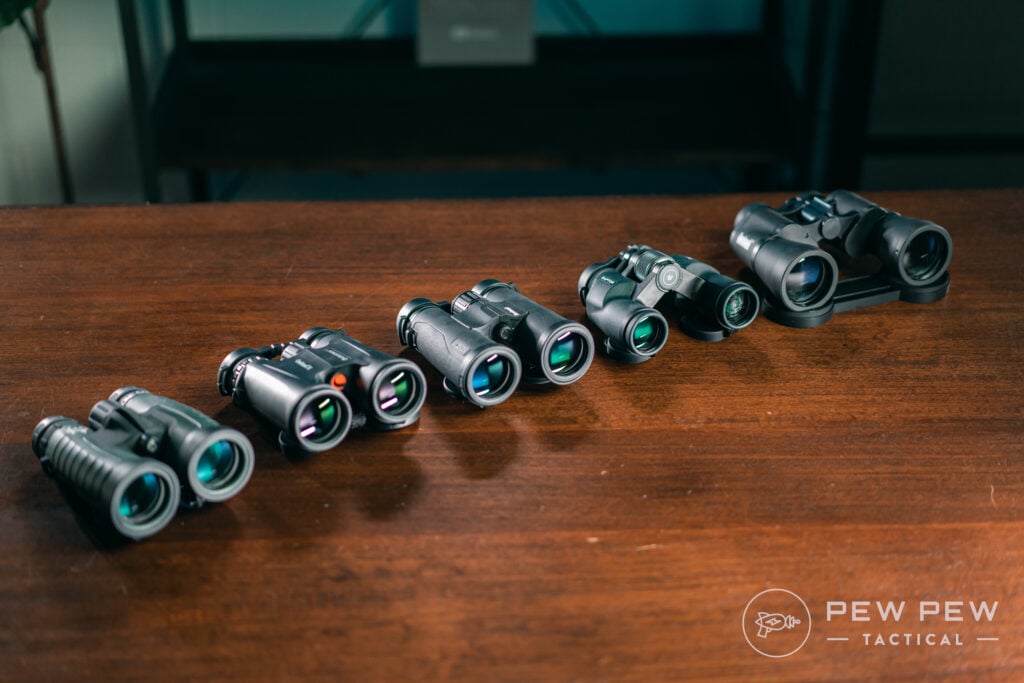
We’ll run you through our favorite models and lay out what you can expect with each. By the end of this article, you’ll be ready to choose your very own binos.
Read on and you’ll find exactly what is right for you.
Table of Contents
Loading…
What Are Binoculars
Fundamentally, they are two telescopes that are locked together in a manner that allows you to use both eyes when viewing through them.
Using both eyes allows more light collection and processing and the ability for your brain to provide a more realistic view, including depth perception.

And… that’s about it. That’s what they are.
But how they are constructed, the technology they use, and what is important to you when using them is a much more complex topic.
Parts, Construction, What It All Means
Let’s try to break some of this down so you at least know what you’re reading about.
This is a condensed version of each topic, there are more complexities and nuances but for anything short of the most hardcore bino user — they aren’t super important.
Numbers On The Box
The first number is the magnification, the second is the objective lens in millimeters. So 8×28 means 8x magnification and the objective is 28mm.
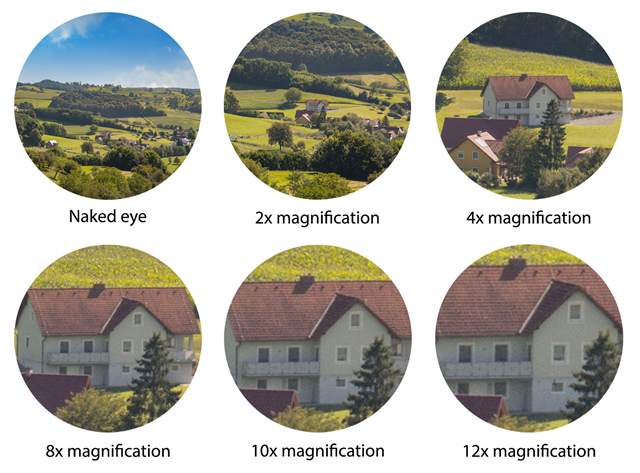
Generally, the larger the objective the more light that can enter the system. But it also means it’s larger and heavier than a smaller option.
Glass Coating
Coatings on glass are one of the newest improvements introduced to optics, but also one of the most important.
The problem is that there are no industry or regulatory standards for the terms and names used.
Some coating names are trademarked by a brand, some are very general like “HD.”
They mean something to the manufacturer, but the manufacturer is the people that assign the definition.
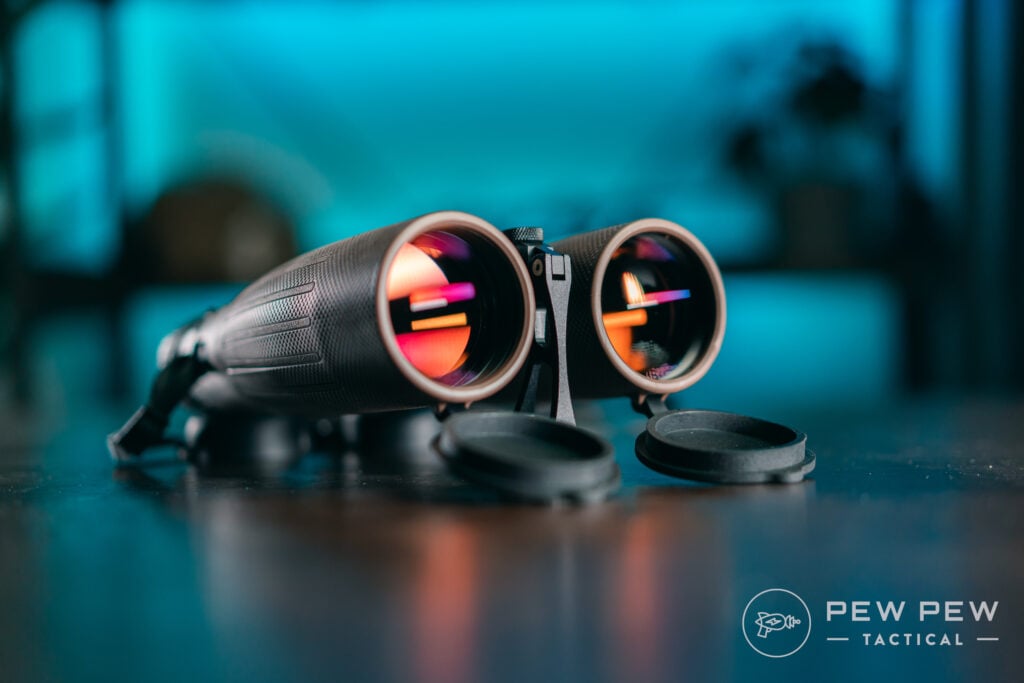
If you ask the manufacturer what theirs means, they will give you a marketing response like “Our HD glass coating allows for more light transmission for better performance.”
Well…duh. But how and why or what the coating really is are protected pieces of information.
This can make choosing between one or the other coatings kind of tricky.
The way I look at it is that I don’t try to compare them outside of their brand. Such as, if I’m looking at a Vortex and a Sig Sauer — I don’t try to compare the ones box names for the coatings to the other.
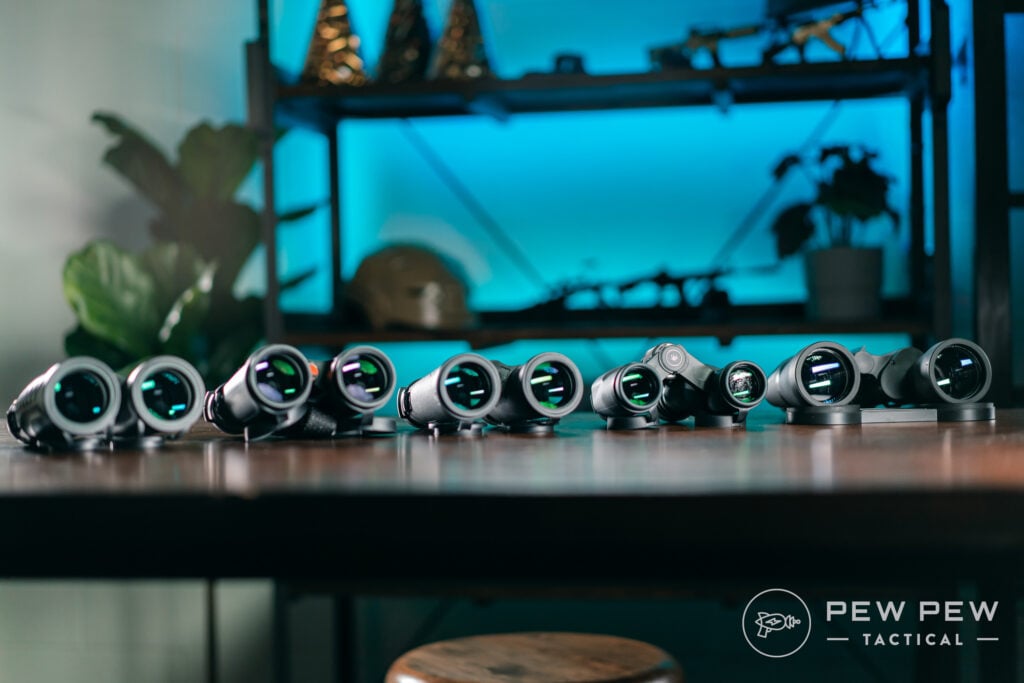
I have no idea what differences there are between their respective “HD” glass. But I do know they both have some kind of coating that improves their performance.
What I do compare is within the same brand, how many extras they list.
If one tier of optics has “HD” glass, but the tier up has “HD” and “ED” then you can generally assume the one with both coatings is the better set of glass.
Glass Quality
At the core of the optical system, glass quality is what makes or breaks everything.
However, knowing what you’re really getting is basically impossible for the average user. There are some simple guidelines that you can keep in mind though.
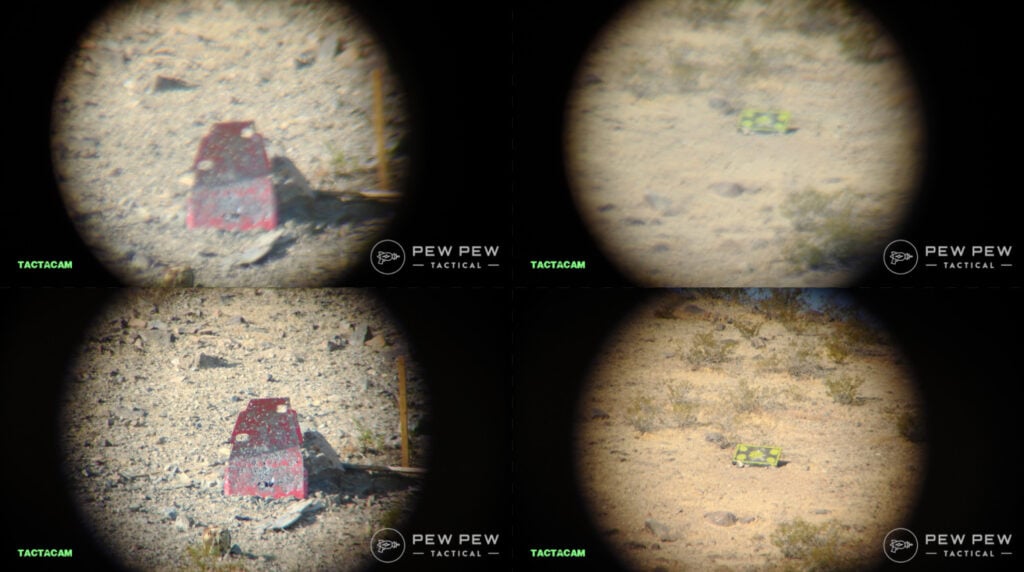
Remember that glass comes in grades. Like wood or coffee, glass comes in different grades or tiers of quality.
While lenses might be made by one brand in one factory for almost an entire brands worth of binos — the ones that came out…better are going in the more expensive lines.
The ones that met specs but didn’t come out as perfect get dropped into the lower-priced lines.
This is important to remember and to not let yourself get sucked into the hype of one brand, one OEM, or one country of origin over another.
Yes, Japanese glass is normally very good. But that doesn’t mean Chinese glass is bad or that you can’t get the same quality simply based on origin.
That said, you will normally only find Japanese or German glass in higher quality binos since they are more expensive to produce.
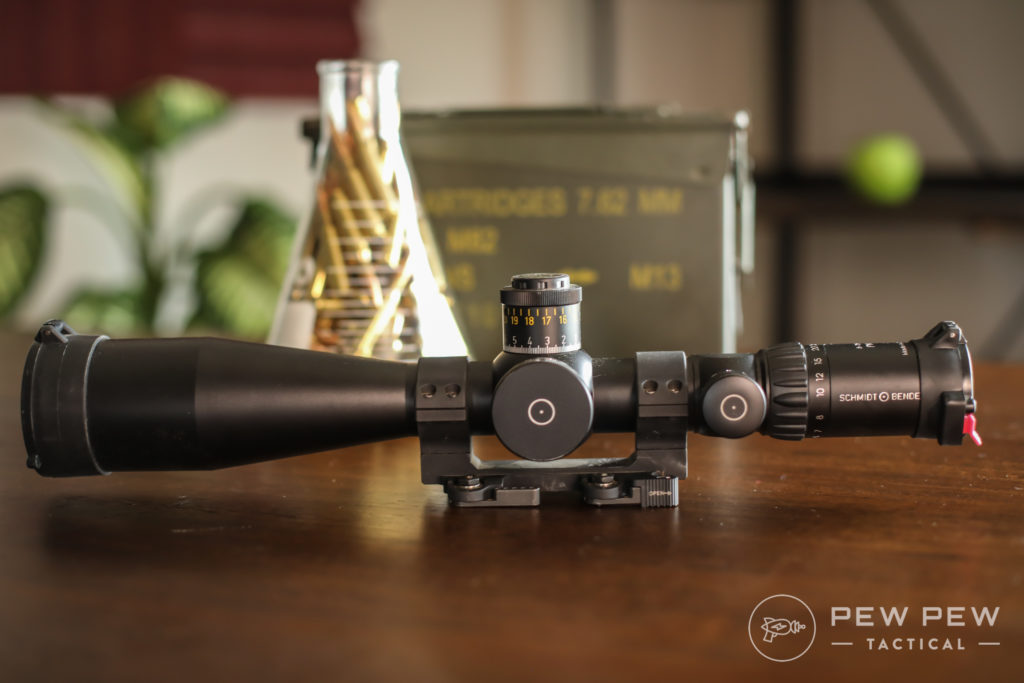
If a brand is going to go through the cost of using components from higher-cost origins, they normally don’t drop them in budget level offerings.
When all is said and done — you can normally assume that if you’re paying more, you’re getting more.
With the big-name players in optics, Vortex, Sig Sauer, Athlon, Bushnell, Swarovski, Steiner, Zeiss, the list goes on — if you’re paying more for a higher tier of optics, there is a reason for it.
These are established and trusted brands that aren’t in the business of duping their customers.
Exit Pupil
Very simply, the exit pupil is the diameter of focused light exiting the binoculars measured in millimeters.
If you didn’t know, your eyes work a lot like shutters. Your pupil is a hole that regulates the amount of light entering your eyes.
Less light in the environment and your pupil relaxes and opens to allow more light in. With more light in the environment, your pupil contracts and closes up to allow less light.

Without turning this into a biology class, generally speaking, the human pupil is about 2 to 4 millimeters in daylight and 4 to 8 millimeters when fully dilated (opened).
And your pupils tend to get smaller with age.
This is useful information because it helps you judge if a pair of binoculars will allow enough light through on a mechanical level to be useful to you.
A very narrow exit pupil will mechanically not allow as much light through as a larger exit pupil.
However, you might not actually need a larger exit pupil if you’re planning on using them during the day when your pupils are going to be smaller anyway.
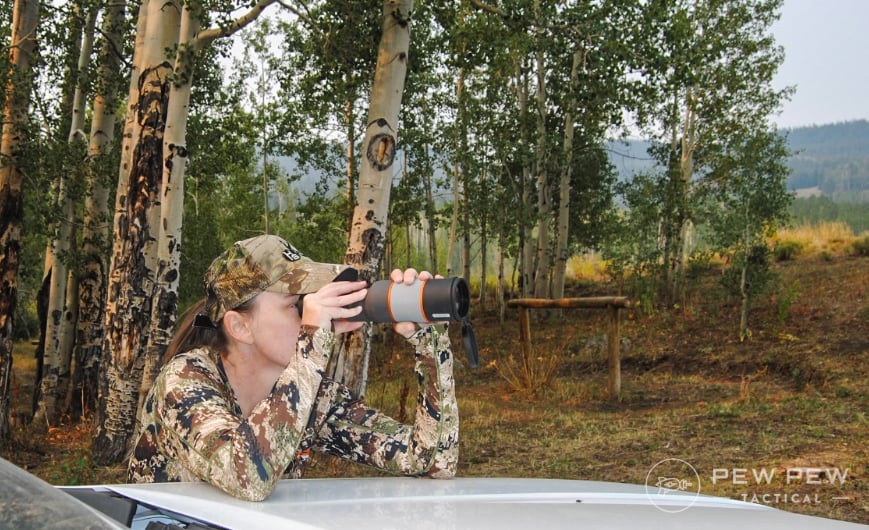
On the other hand, if you want to use them mostly at dusk or in lower light such as under heavy shade — you might want to opt for a large exit pupil to take advantage of as much light as possible.
Exit pupil is measured by taking the effective diameter of the objective lens ÷ by magnification.
If a set of binoculars are 8x34mm, you would take 34 and divide by 8 for 4.25mm.
Twilight Factor
This really isn’t important anymore, but it’s worth talking about since many people make the mistake of assigning great importance to it still.
Twilight Factor is a mathematical formula applied to binoculars to judge how well they will work during twilight hours.
The math is the square root of the product of the diameter of the objective lens and the magnifying power.
So for a pair of 15x50mm binoculars, 15×50 = 750 sq.root = 27.4 twilight factor.
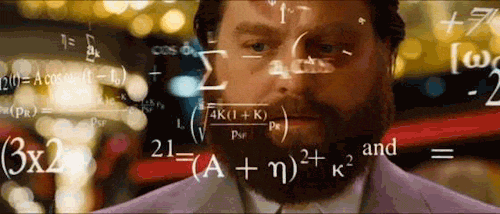
A decade or two ago, this was a critical part of comparing binoculars. However, with modern glass coatings, this number is more or less irrelevant.
Coatings on the glass are more important than ever and can double the amount of light that passes through the optical system.
Because of this huge range of coating quality and their effect on the amount of light that gets through — the twilight factor calculation is wasted.
Eye Relief
How far away your eyes can or should be from the exit lens. With all but the cheapest sets of binoculars, this is semi-adjustable so that you can get the right off-set.

However, if you’re planning on using these with giant goggles or something — you might want to opt for a pair with a wider range.
Weather Proofing and “IP” Certifications
Exactly what it sounds like, how weatherproof your binoculars are. There are several different types but the three major ones are fog-proof, weatherproof, and waterproof.
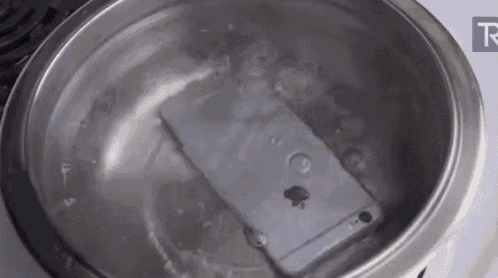
“Weatherproof” is generally marketing unless it comes with a certification. While it’s better than nothing, don’t expect much.
“Waterproof” is normally better and means water won’t get into the optical system, but this doesn’t mean that it is fog-proof — so you can still get fog if you have the right conditions for it.
“Fog-proof” means your glasses won’t fog up if you go from your cooled trunk to the hot, humid outsides. It’s also good to know that if something is fog-proof, it is also waterproof.
All of the above is basically just on the word of the manufacturer.
For something you can rely on, look for an “IP” certification. “IP” stands for “Ingress Protection” and is an international standard set by the International Electrotechnical Commission.
Basically, a bunch of nerds who set a standard for testing how -proof something is.
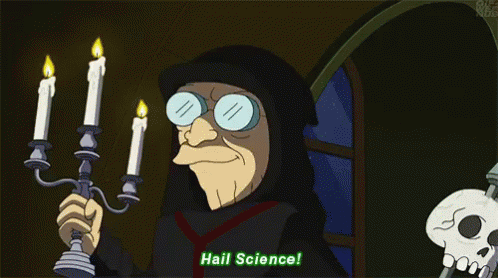
IP testing also cannot be conducted by the company making or selling the product itself, it must be given by a certified, independent tester.
IP codes come with the “IP” followed by two numbers or one number and an “X”. The first number is how resistant to solids the item is, such as dust, the second number is how water resistant it is.
An “X” means it wasn’t tested against that. So IPX3 means it wasn’t tested for solids, but passed the requirements for the 3rd water protection — in this case, “can take water sprays of up to 60-degrees.”
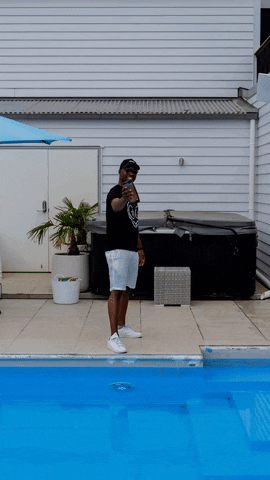
The higher the number — the better the resistance. If you don’t feel like memorizing all of the codes, here is a link to a Wiki page that has them listed and explained.
Don’t be super surprised if you don’t often see an IP rating. In fact, of the brands we’ve tested — only two carried IP ratings on any of their options, Bushnell and Maven.
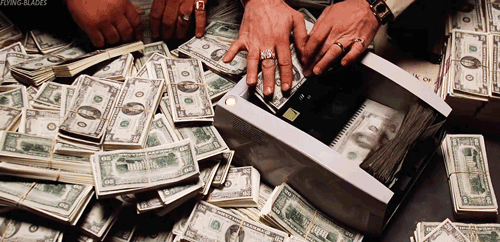
Since getting an IP rating requires outside certification, it’s not a cheap process and one that most manufacturers on most of their lines won’t bother getting.
But if you do see it, you can trust it.
Roof Vs. Porro Prism
Generally speaking, this isn’t a supercritical thing to consider.
The prism is a part of the optical system that delivers the image to your eye, the purpose of the prism is to adjust the image so that it’s right-side-up when you view it.
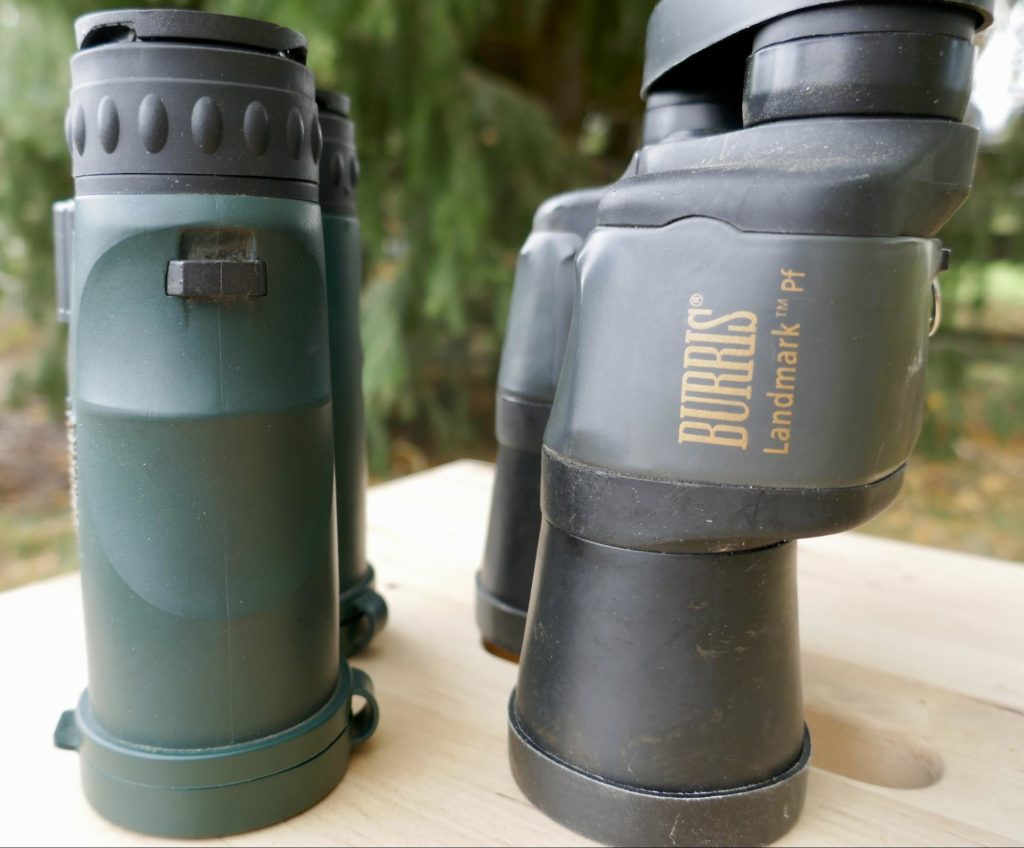
Roof prisms are a touch more expensive to produce but allow for a smaller and more streamlined barrel.
Porro prisms are bulky, but cheaper to produce.
Because they are cheaper you can sometimes find better quality glass in the optical system as a whole for a lower price than roof prism models — but at the cost of having a set of binoculars that aren’t svelte.
What’s In The Box?!
Modern binos rarely just come as the unit by itself, these days as more brands are trying to stand out and offer more value — you’re likely going to get some extras in your package.
What they are, if they are useful to you, totally depends.
There are three basic extras that you should keep an eye out for though:
- Carry Case
- Neck/Shoulder Strap
- Tripod Ready
A carrying case is nice and pretty universal, it’s really rare you won’t get one but it does happen. Generally, I don’t really care that much about the quality of the case itself since it’s just a thing to hold the binos.
If I’m going to pack them and need more protection, I’ll put them in a safer box regardless of what case they came in.
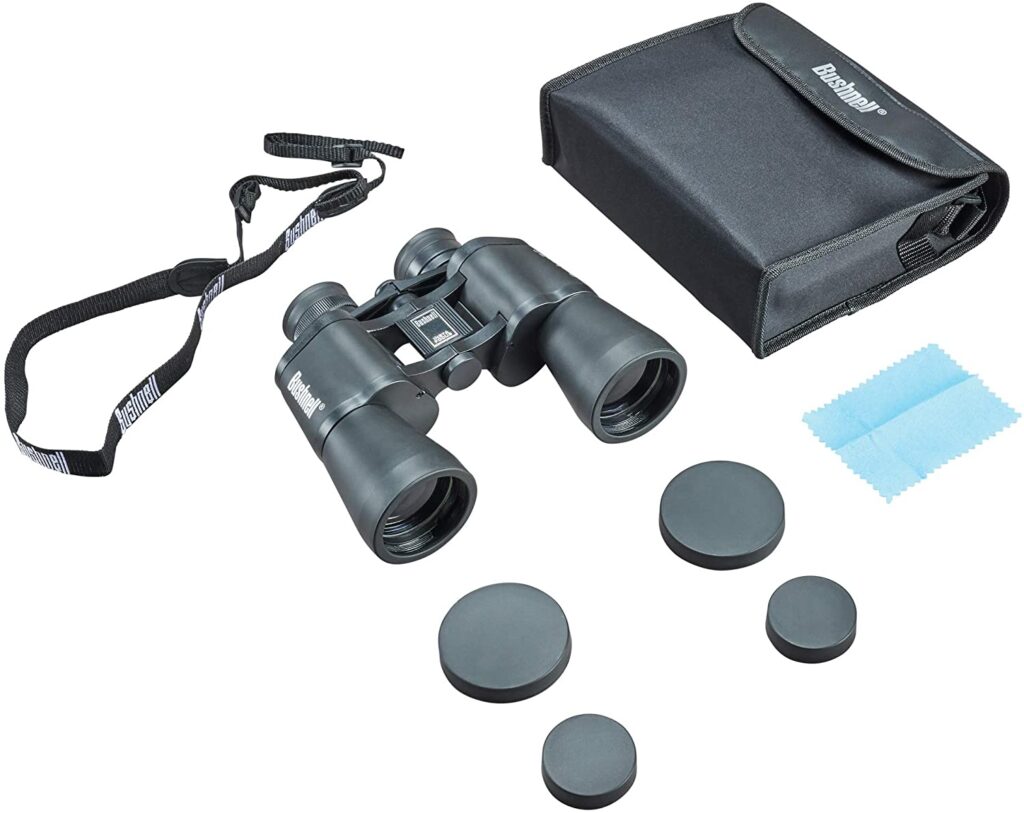
A neck or shoulder strap is a requirement for binos.
The larger they are, the better the strap needs to be.
A really small compact 8x28mm set can get away with just a piece of paracord, but a full-size 15x56mm better come with some padding.
Tripod “ready” and tripod “adaptor” are two very different things. While many will come “ready” not all of them come with the adaptor needed to actually make it happen.
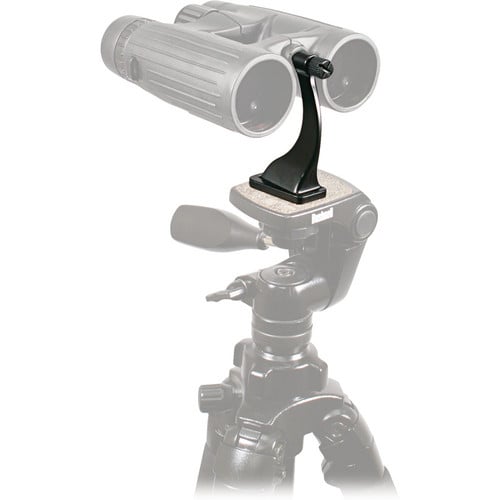
If you are planning on or just want the option to use them with a tripod, make sure you know if you can first.
Alternatively, you can get a universal strap set up that lets you throw any binos on a tripod.
How To Choose The Best For You
This is where things can get really complex. A lot of people make the mistake that “more is better” or that “bigger is better” and that really isn’t true when it comes to binos.
Sure, you can get the 18x56mm — but is that what you really want if you’re hiking 15 miles into the mountains?
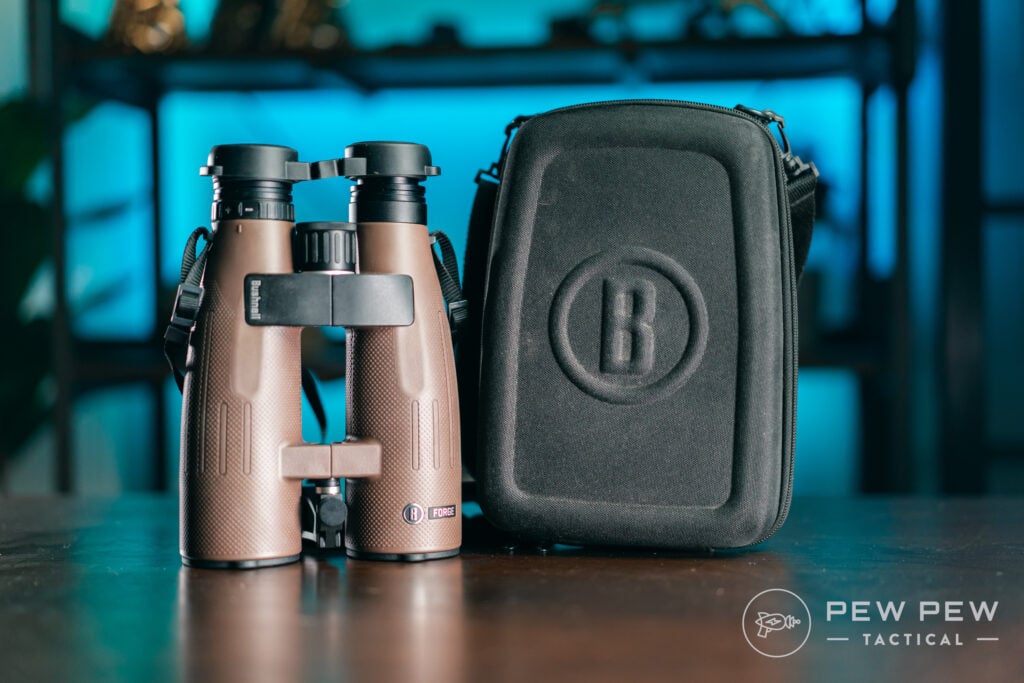
The 8x28mm sure sounds lightweight, but is it going to be enough if you’re looking for Javelina across the desert?
Generally speaking, you’re probably going to want something either 8 or 10x power.
These are normally the sweet spots for magnification that give you enough of a boost to let you see — but not so much that you lose field of view or clarity.
You might consider something in the 12x, 15x, or 18x if you know you’re going to be glassing things from a long distance or you need a closer look at things — this might be useful if you need to count points to see if a beast is legal.
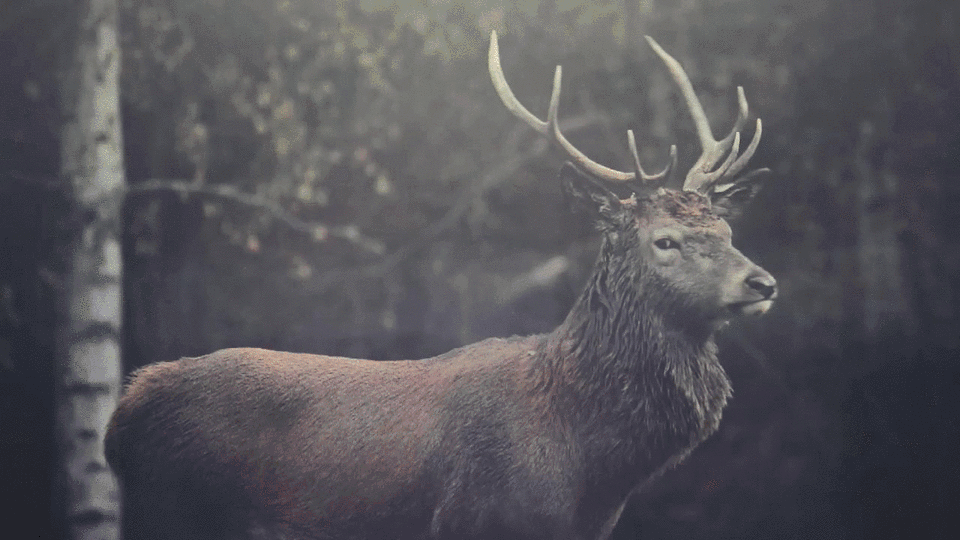
Beyond that, basically spend as much money as your budget allows while getting the features that you really want.
I know that sounds like weird advice but it’s true. Glass quality, coatings, durability, all of it costs money. If all you have in the budget is $50, then get a sub-$50 bino.
But if you can swing $150, $200, $1,000, or more, then don’t hesitate to spend it.
Up to a point, you will see a huge return on your investment — personally, I find that point to be around the $750+ mark, that’s where diminishing returns start to make each new tier of quality really painful on the wallet.

The Best Binoculars Under $150
| Bino | Mag/Lens | Exit Pupil | Twilight Factor | Price |
| Bushnell Falcon | 10×50 | 5 | 22.4 | $40 |
| Celestron Outland X | 10×42 | 4.2 | 20.5 | $88 |
| Vortex Raptor | 8.5×32 | 3.8 | 16.5 | $99 |
| Bushnell Engage | 10×42 | 4.2 | 20.5 | $105 |
| Bushnell Trophy XLT (Bone Collector) | 10×42 | 4.2 | 20.5 | $130 |
1. Bushnell Falcon 10x50mm
Okay for $40 — this is pretty baller. Like…keep in mind just how CHEAP the Bushnell Falcon is.
The colors and light of the binos are great, like truly surprisingly good.
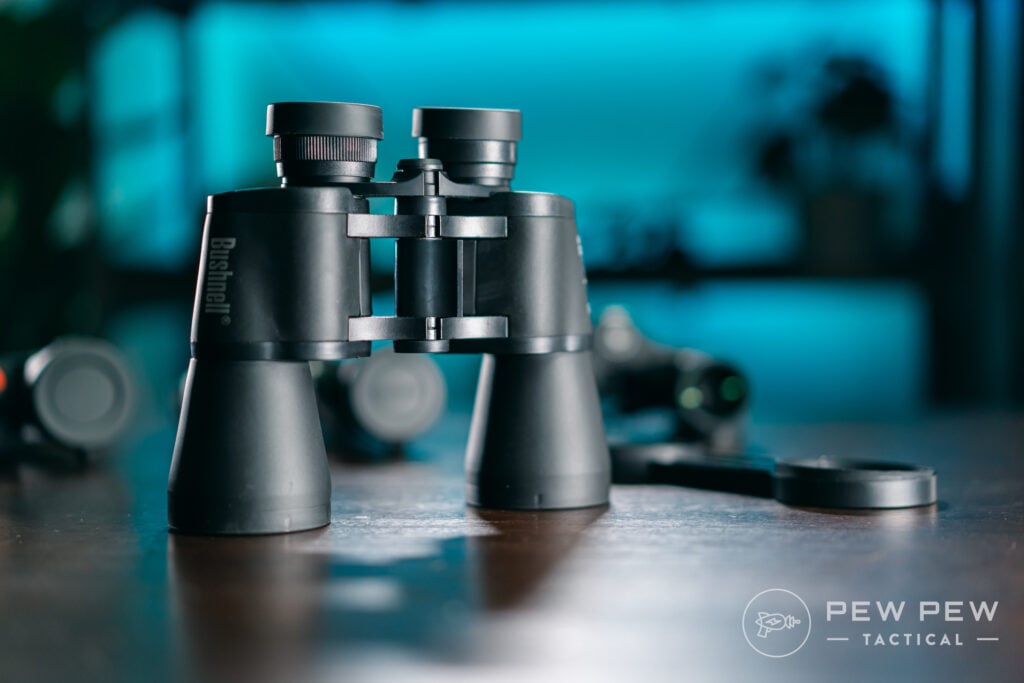
Focus and definition at the center of the image are great also, but it quickly gets fuzzy and warped as your eye moves away from the center.
Plus, these are huge. Using a Porro Prism — the Falcons are bulky and a bit in the way.
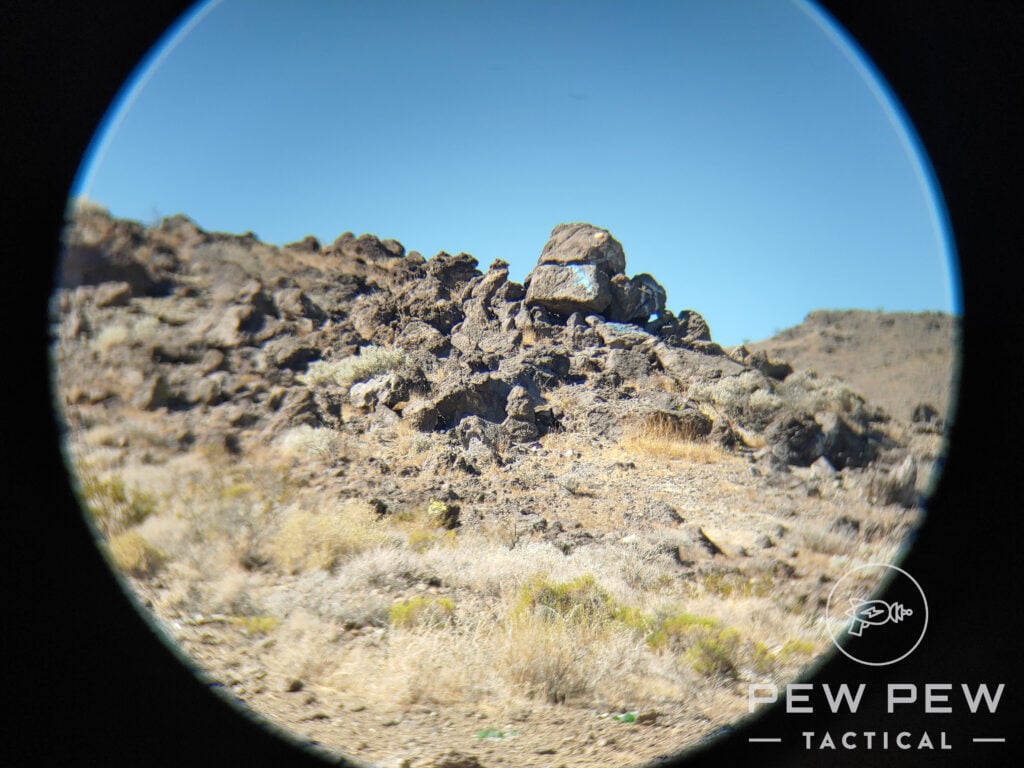
It is also really light on the extras. Cannot be mounted to a tripod, no neck strap, the objective lens cover is a single piece of huge plastic, no optical lens protection, and the eyepieces only have soft rubber cups for eye relief.
But it does at least come with a soft case, so there is that. And it has hardpoints for a neck strap if you want to provide your own.
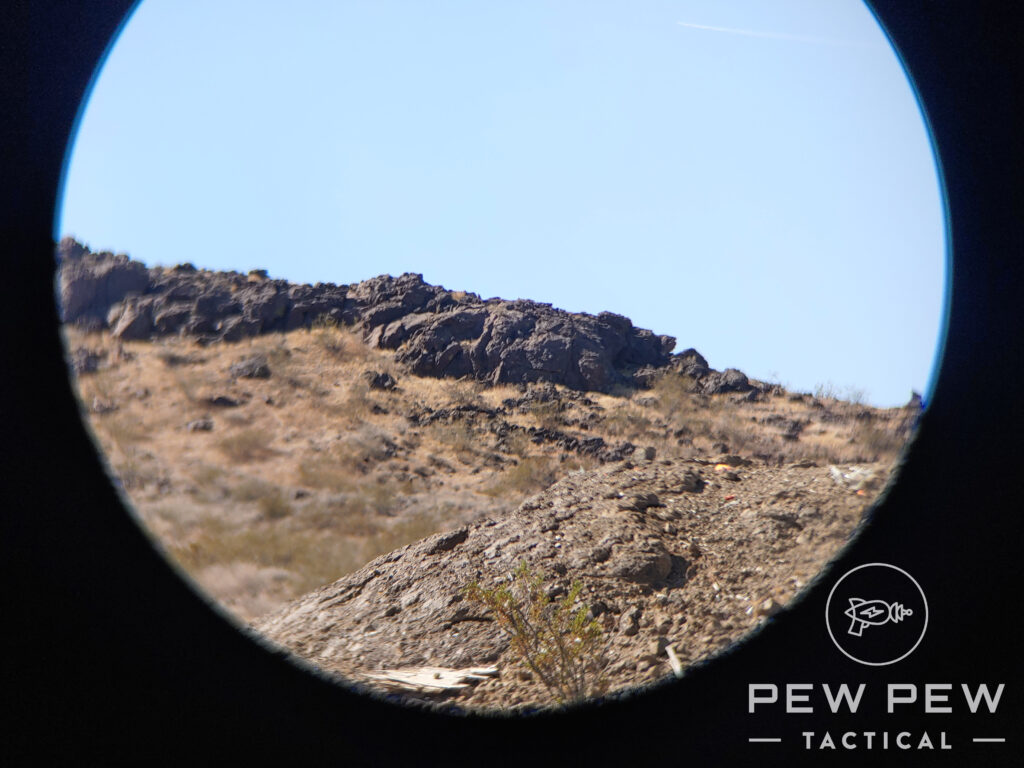
Exit pupil is 5.0mm and a twilight factor of 22.4.
For the price — I really like them.
If you wanted to go birding, needed a cheap pair of binos to give the new hunter in your group, or wanted something for a sporting event and weren’t worried about the bulk, I say go for it.
The glass quality was shockingly good, even if the image suffered outside of the center.
-
25% off all OAKLEY products - OAKLEY25
Copied! Visit Merchant
2. Celestron Outland X 10x42mm
Almost double the price of the Falcon, the Celestron Outland X offers a really noticeable difference in quality.
The glass is very similar to the cheaper Bushnells but the quality of the image extends much further from the center.
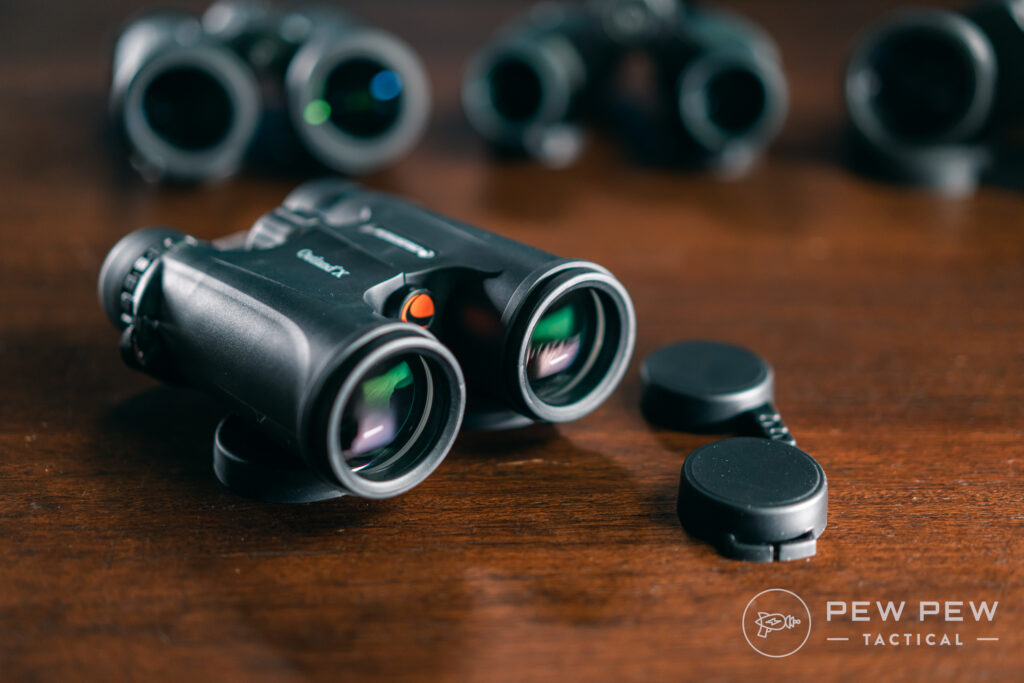
It still gets wonky as you get near the edge, but you still retain a huge amount of the overall view being clear and bright.
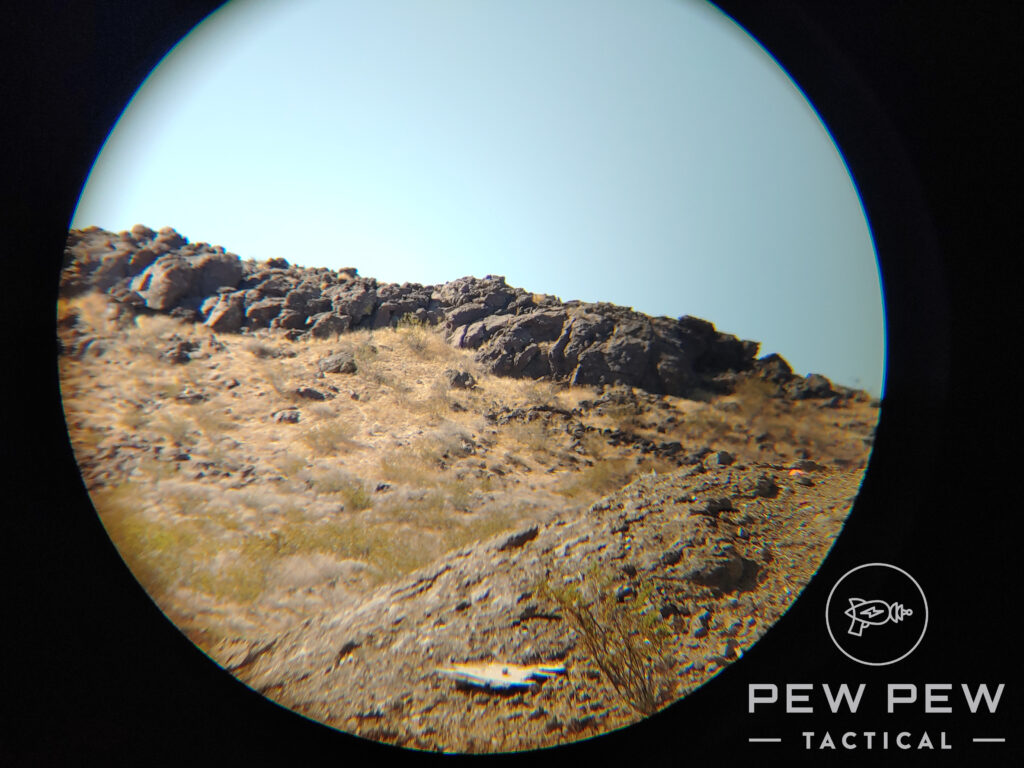
It also comes with a good set of features — tripod ready, soft case, neck strap, soft low-profile cups for the objective lenses, and a 1-piece rubber covering for the optical lenses.
The eyepieces feature adjustable soft cups for setting eye relief.
Exit pupil is slightly smaller at 4.2mm with a 20.5 twilight factor.
Overall, I really like these binos. Getting a decent boost in quality and a lot more features, these are outstanding for under $100.
If you want to stay under a bennie, this would be my top pick.
-
25% off all OAKLEY products - OAKLEY25
Copied! Visit Merchant
3. Vortex Raptor 8.5x32mm
I have to say, these did not fare well.
The day I took pictures was actually the third time I took the binos out for testing. Sometime between the second and third trip out, the left eye of the Raptors…fogged up.
But it isn’t fog, it’s like a milky film has suddenly developed.
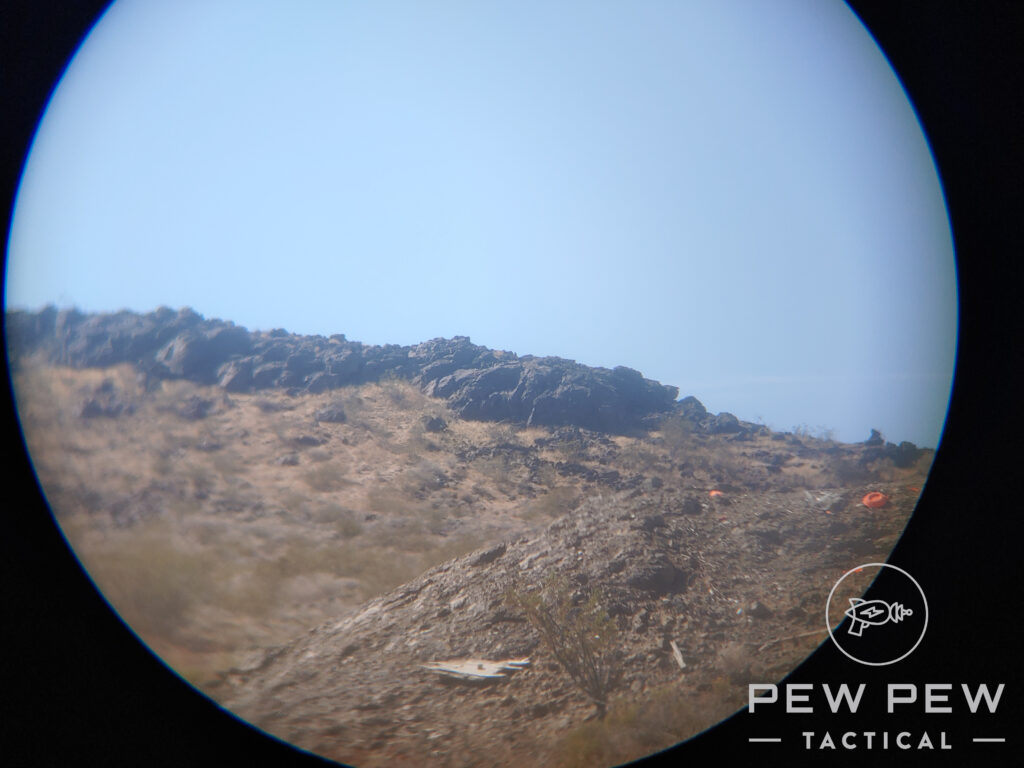
Some kind of weird blotchy coating built up on the inside of the optical lens making the view dull and faded.
What happened? No idea.
All seven binos I’m testing right now were stored in the same box, in the same room, and kept together at all times.
How this ONE lens had something happen…I really can’t explain. But whatever happened, I wouldn’t recommend it.
Even before the left lens broke — the Raptor wasn’t doing well in my testing. The colors felt off from the start and the construction is a bit meh.
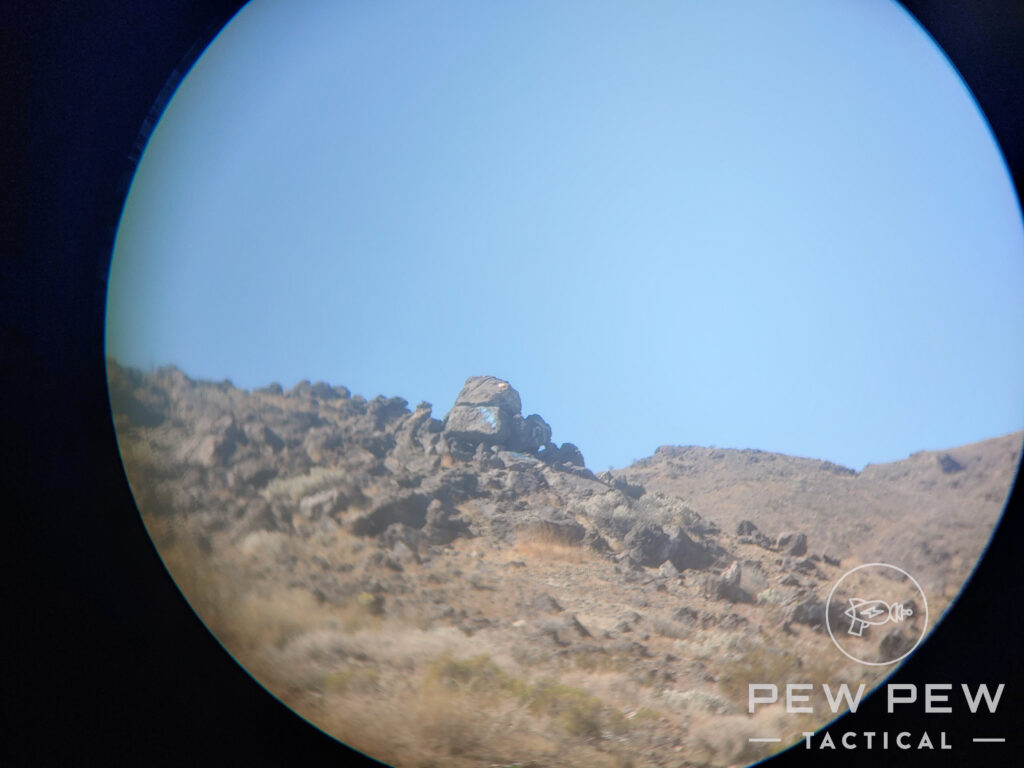
Combine that with it randomly fogging to the point of being nearly unusable and this firmly plants itself as my lowest recommendation.
That said — I do plan on sending it back to Vortex and getting it repaired or replaced.
I know they will because…well, they’re Vortex. Their customer service and warranty are unbeatable.
If the Raptor has anything going for it, it’s the simple fact that it’s a Vortex and I know they will take care of me.
Prices accurate at time of writing
Prices accurate at time of writing
-
25% off all OAKLEY products - OAKLEY25
Copied! Visit Merchant
4. Bushnell Engage X 10x42mm
Both this and the next Bushnell felt from a glass perspective almost the same, the XLT had a slight edge but I do mean slight.
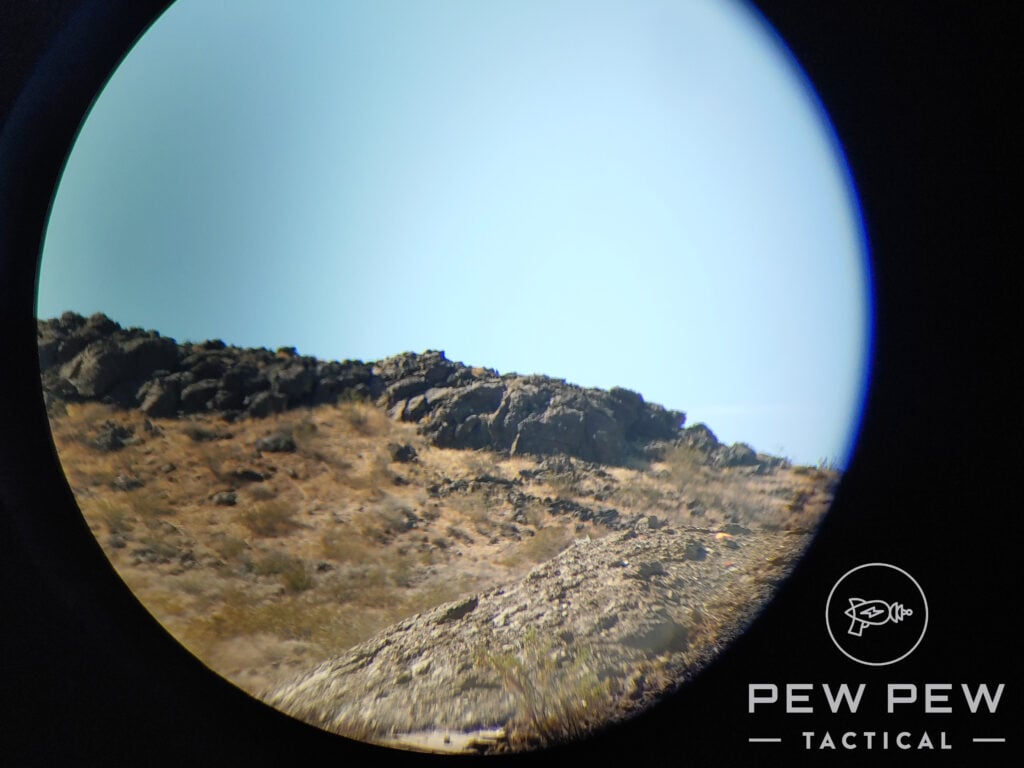
For the Engage X — I really liked it. These pictures really don’t translate the feel of looking through the binos well but the Engage X and Trophy XLT both felt like major steps up from the Celestron.
The image is clear, the colors feel warm and right, and picking out details is surprisingly easier.
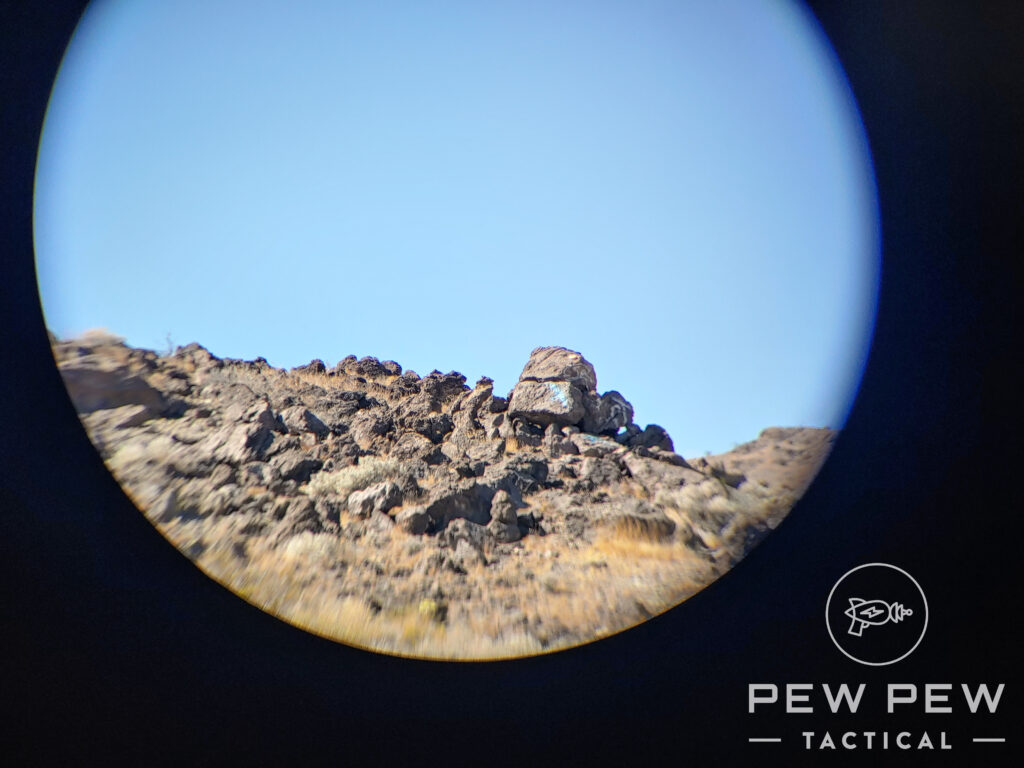
Most diopter adjustments have some kind of knurling or grippyness added, but this was the first of the batch that had a proper knob that I can push against.
This isn’t a huge deal since it’s more or less a set it and forget it, but it does make it a lot easier when sharing between people.
Prices accurate at time of writing
Prices accurate at time of writing
-
25% off all OAKLEY products - OAKLEY25
Copied! Visit Merchant
What do you think of the Bushnell Engage? Give us your rating below!
Honorable Mention
These are WAY out of the price range — but I wanted to show them to you so you can at least get an idea of what you get at the higher end of the binos price range.
Bushnell Trophy XLT 10x42mm
[EDITOR’S NOTE] The Bushnell Trophy XLT was under $150 when we bought it and for 99% of our time testing it. Around the end of November 2020, the price has skyrocketed to over $250. Because of the price change, we’ve moved it into our Honorable Mentions. If the price returns to “normal” we’ll move it back into our main recommendations. At the current price — we do NOT recommend it.
Maybe predictable, the option tested that is brushing up against our price limit turns out to the best performing of the lot.
It feels good to really get your monies out of something and the Trophy XLT delivers in every respect.
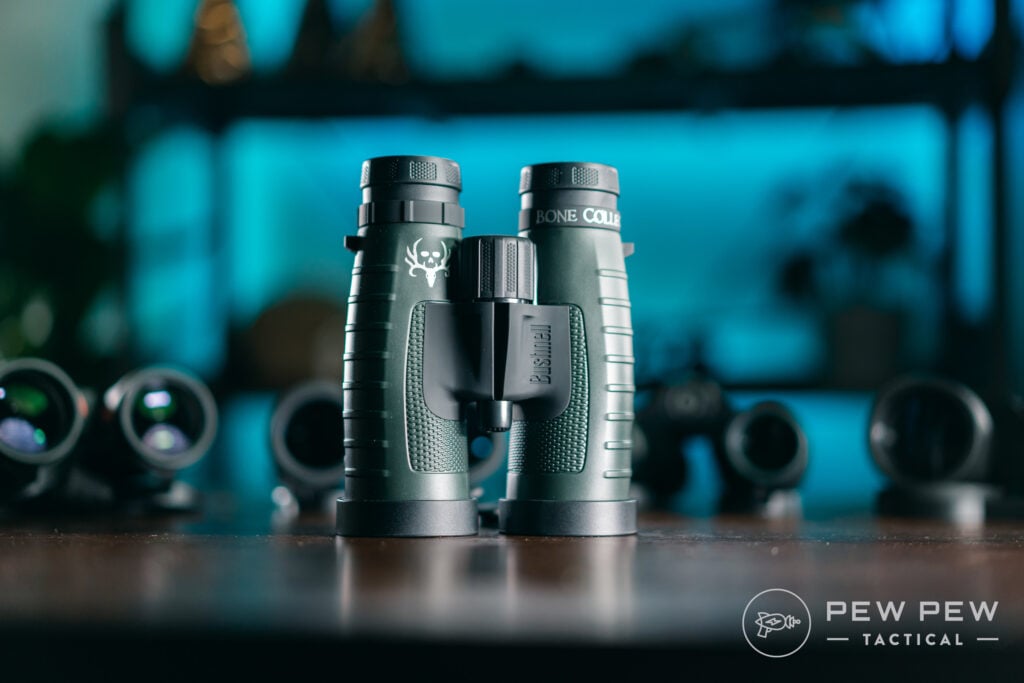
Glass quality feels better in all ways, more light, more color, more clarity, and minimal blurring compared to the others.
What really makes me like these binos though is that everything is just a little bit bigger. While they are a 10x42mm like several other options are, they are still a little bigger.
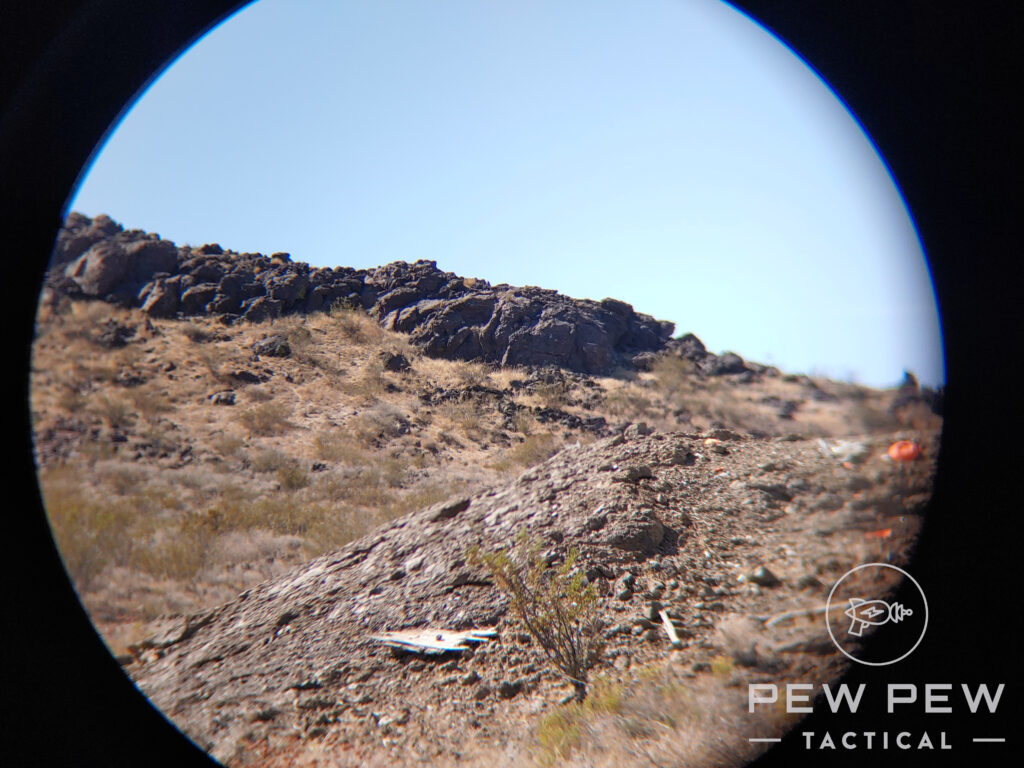
The thickness, the focus knob, even the little eye loops for the neck strap — all of it is just a little larger.
For someone like me who has huge hands, this just makes everything about it better to handle and hold.
While it does mean that it isn’t the most compact option, it does feel better to actually use over a period of time — assuming you have slightly to greatly above-average hands.
-
25% off all OAKLEY products - OAKLEY25
Copied! Visit Merchant
Maven B.5 10x56mm
If you’re really ready to join the majors, Maven is a name you need to know. These are expensive at $1,400 American dollars — but at the same time…they are inexpensive, kind of.
What I mean is that these punch way, way outside their price range.
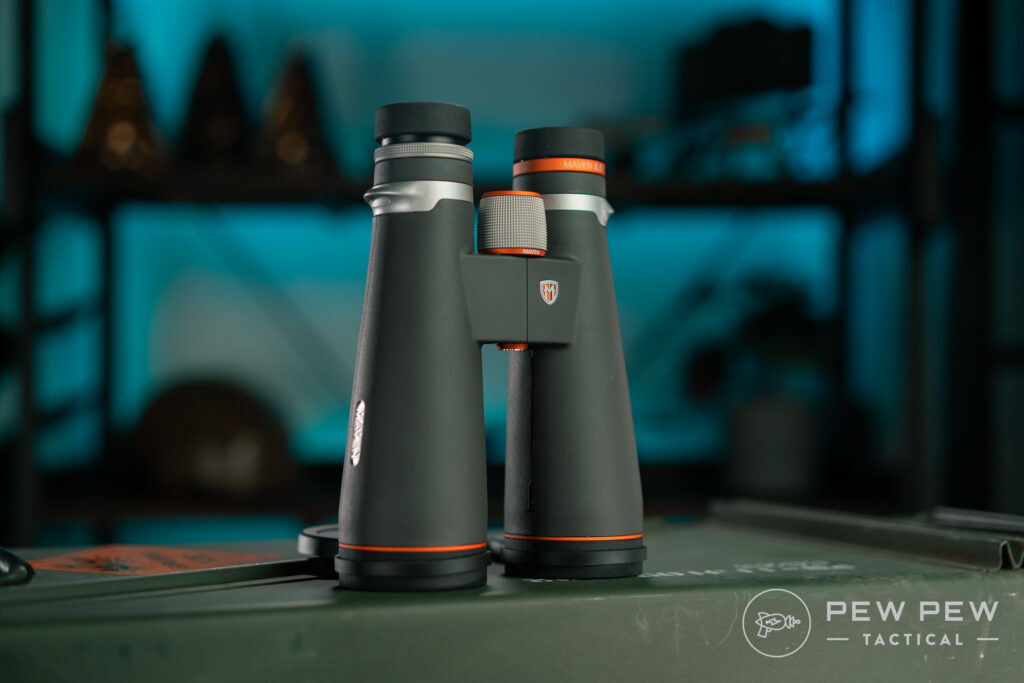
Sure, $1,400 is a lot of money — but looking side by side with these and a Swarovksi SLC 8x56mm that retails for $2,400 — I truly didn’t see a difference in quality.
Maven is a custom options brand, but they also keep their overhead down by selling directly to the end-user instead of going through a store.
So while you won’t find these in your local Bass Pro, you are directly turning those savings into higher-quality options.
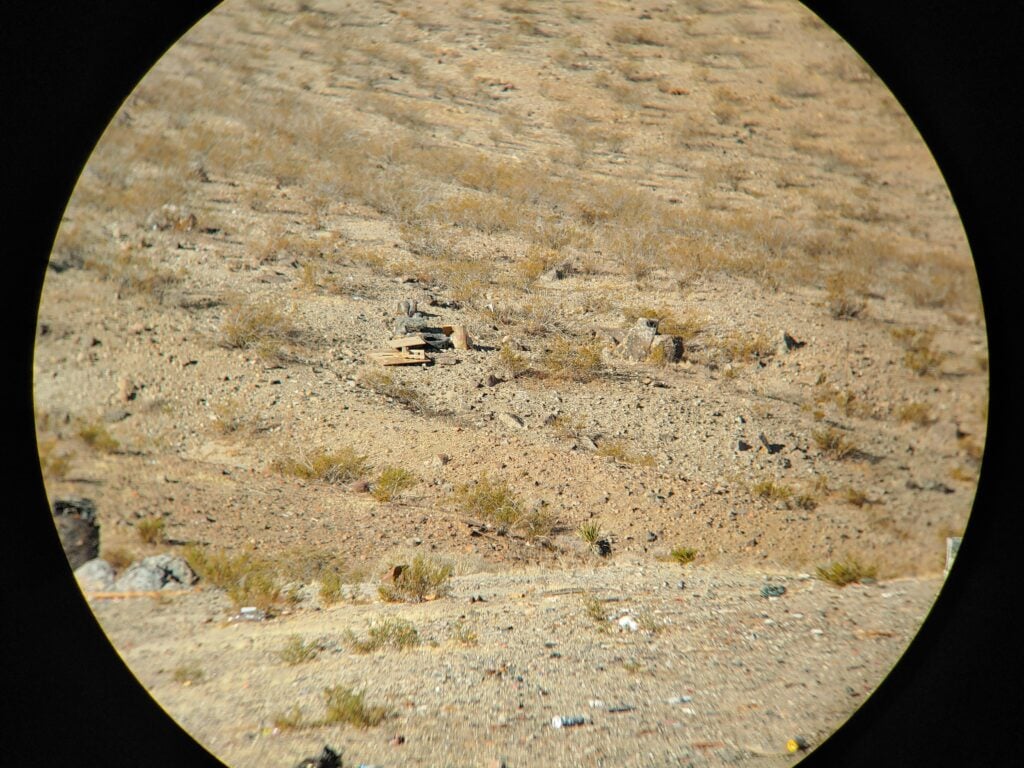
The glass is amazing, even at dusk it’s almost like looking at things during the day it’s so clear. A huge and heavily knurled focus knob makes it very fast and easy to use and the lens covers are super thick and well built.
A grippy coating is used on the entire body of the B.5 that keeps it really firm in your hand without feeling weird.
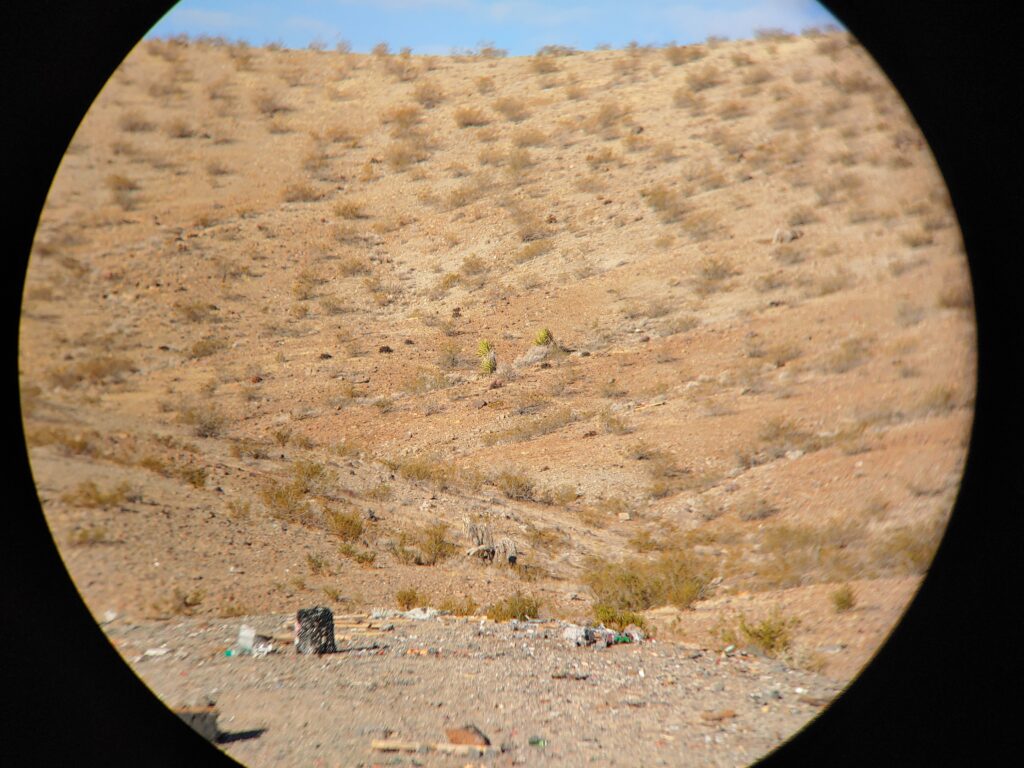
Maven also uses a magnesium frame for weight reduction and Abbe-Koenig prism with fluorite glass for some insane clarity. It’s a lot of optical magic packed into these binos.
Unfortunately, while they are tripod adaptable — the actual doodad to connect them is an extra $90.
Kind of stings after dropping this kind of cash on binos to have to throw down an extra bennie to unlock all of the features.
Prices accurate at time of writing
Prices accurate at time of writing
-
25% off all OAKLEY products - OAKLEY25
Copied! Visit Merchant
Conclusion
If I’ve learned anything during my time testing binoculars, it’s this: if you can spring for something more expensive, do it! The quality of glass and construction dramatically increases with every dollar you spend.
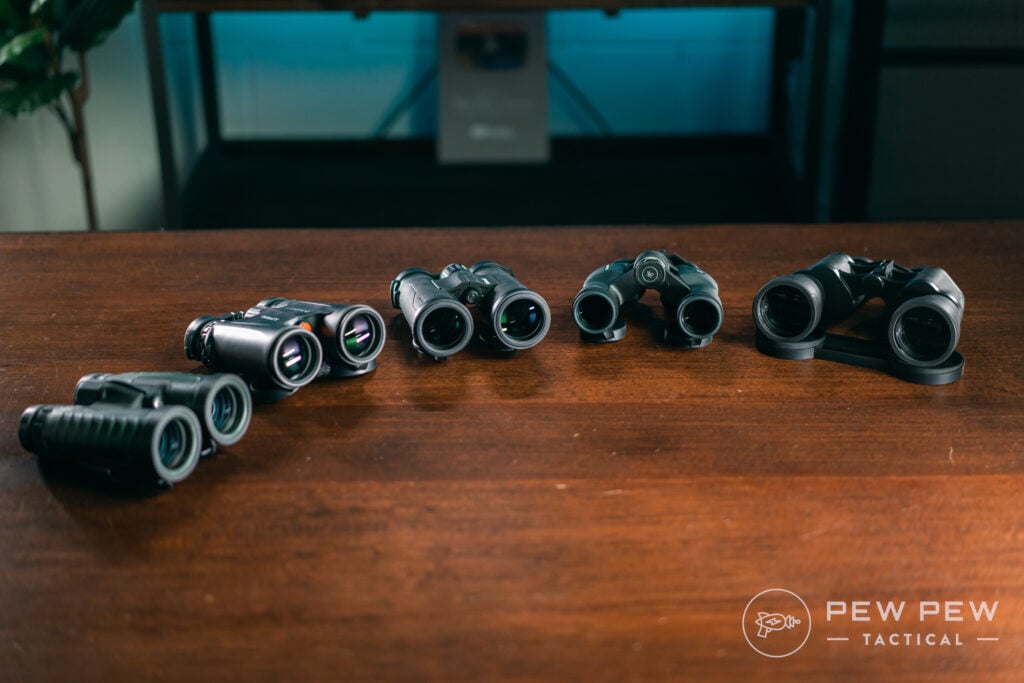
Personally, I wasn’t a big binos user until fairly recently. But between the testing for this article and doing more shooting competitions, I’ve become a firm believer in having a solid set with me whenever I can spare the weight.
A good set of binos is like a good knife when you need one — nothing else will do.
Any awesome sets of cheap binos you would recommend? Do you prefer binos or a spotting scope? Let us know in the comments! Speaking of spotters, you might want to check out our Best Spotting Scopes article also!

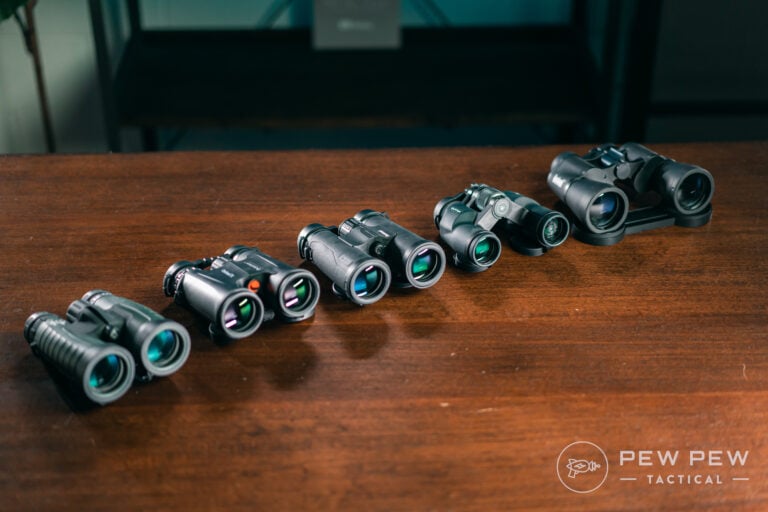






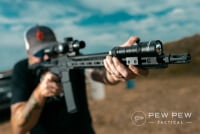
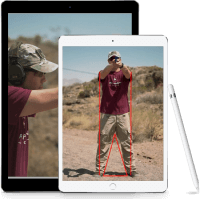
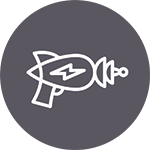

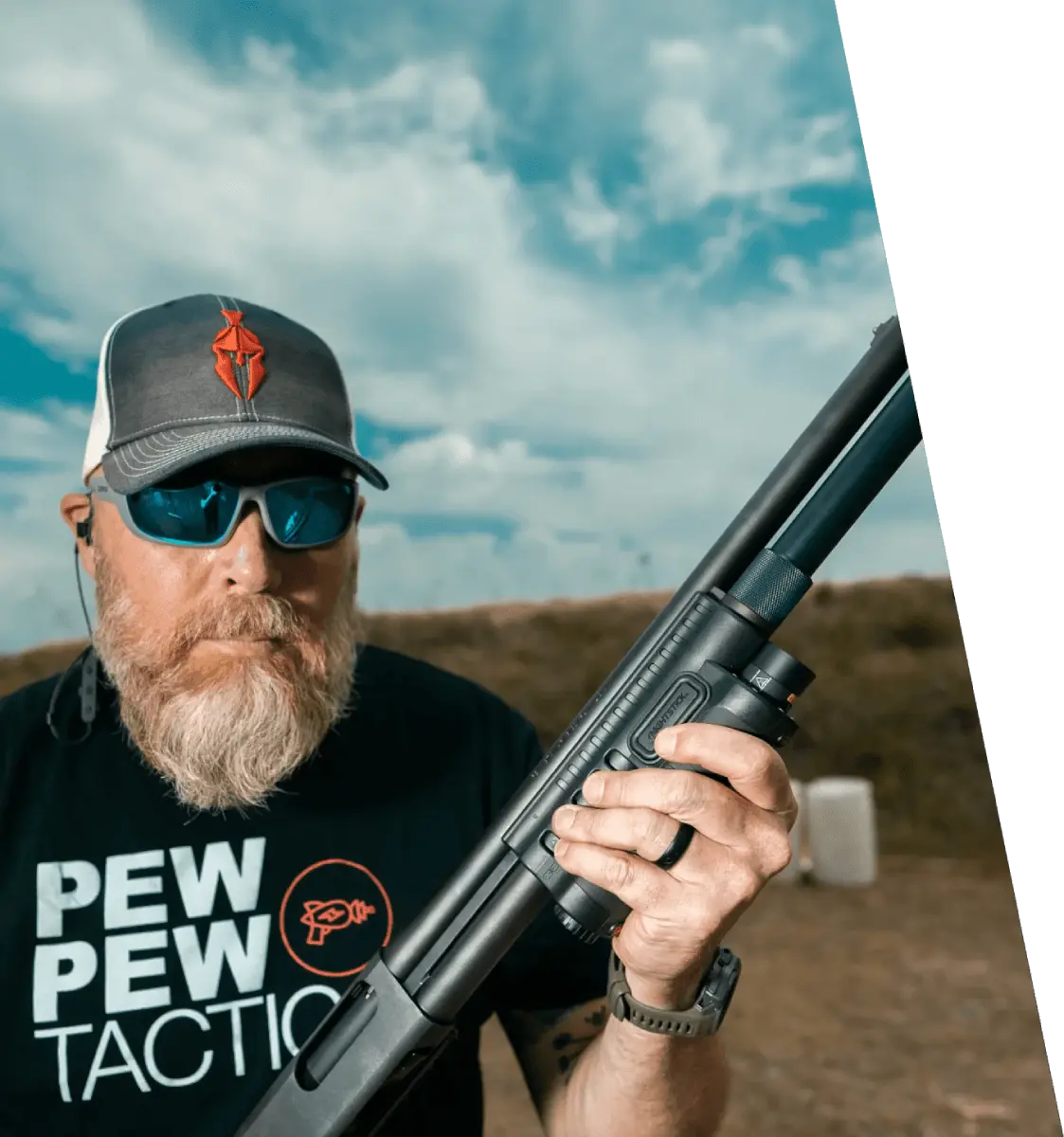

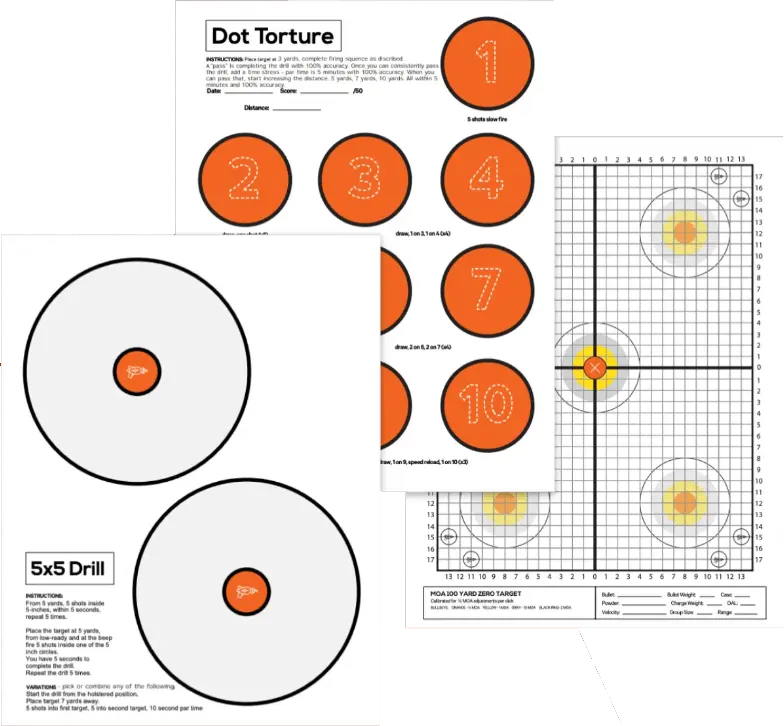
Leave a Reply